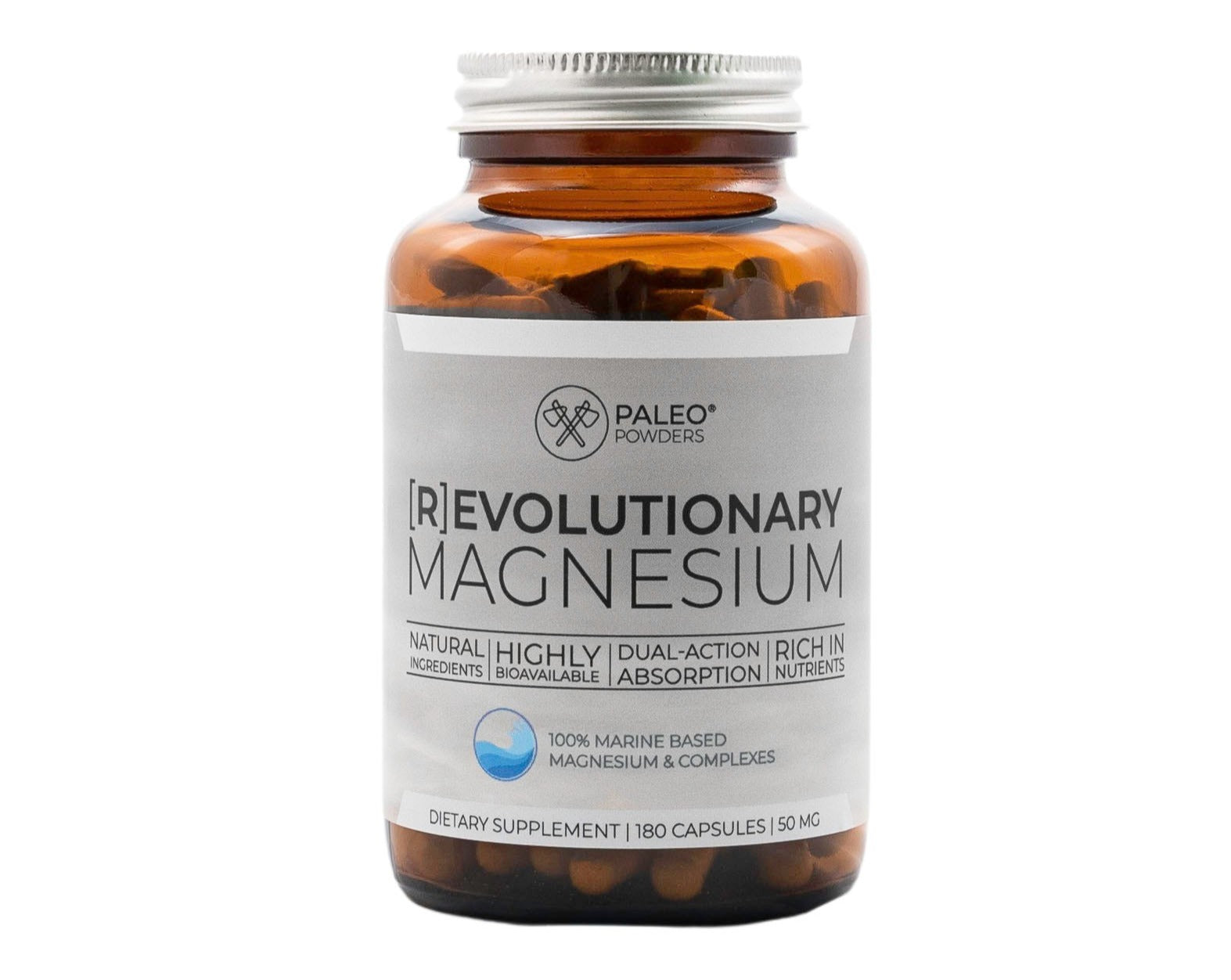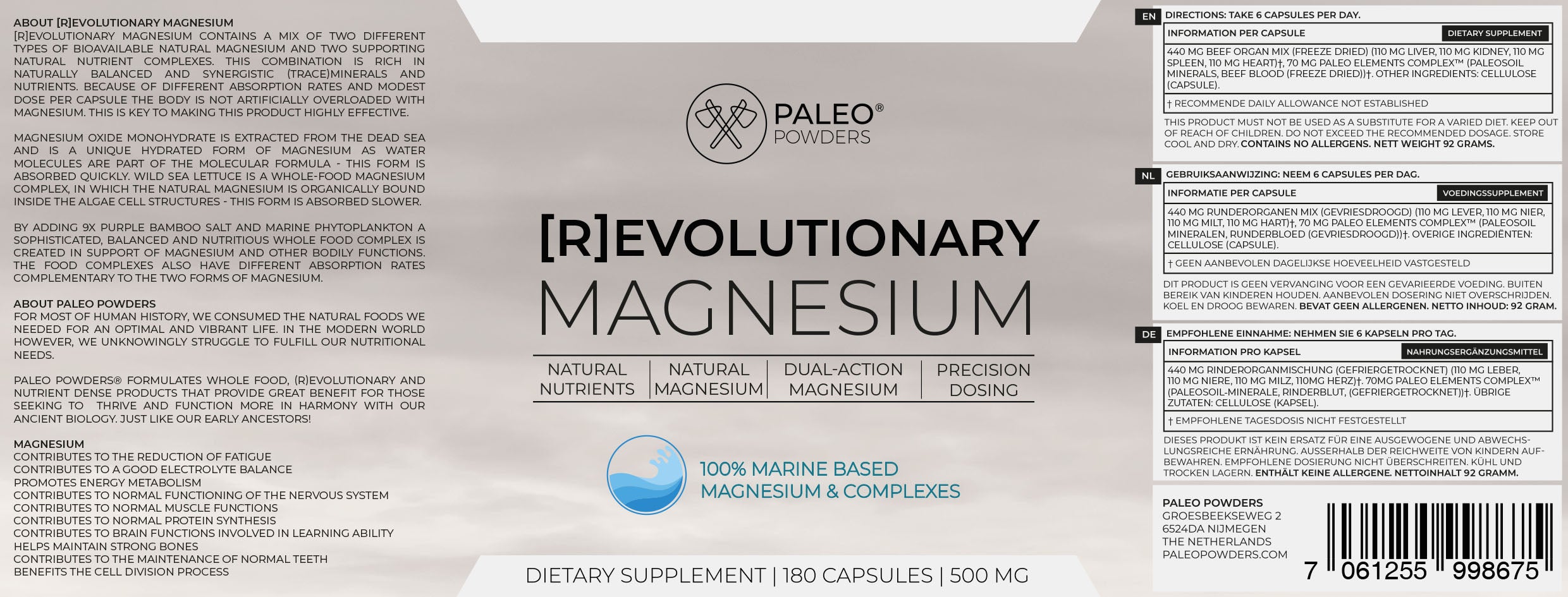
Upgrade je kennis, deel 2 - Mineralen & spoorelementen
Essentiële voedingsstoffen
Mineralen zijn anorganische verbindingen die het lichaam nodig heeft als essentiële voedingsstoffen om goed te kunnen functioneren. Mineralen vormen één van de vier groepen essentiële voedingsstoffen, samen met vitamines, essentiële vetzuren en essentiële aminozuren. Mineralen zijn betrokken bij talrijke biochemische processen in het lichaam. Zonder mineralen kunnen vitaminen niet functioneren.
We onderscheiden macromineralen, waarvan we dagelijks een grotere hoeveelheid nodig hebben, en micromineralen of spoorelementen, die in kleine hoeveelheden in het lichaam voorkomen. Daarvan hebben we dagelijks een kleine hoeveelheid nodig. Net zoals vitaminen, kunnen mineralen en spoorelementen niet gesynthetiseerd worden in het lichaam. Daarom worden ze essentieel genoemd. Mineralen halen we uit plantaardige of dierlijke voeding of uit drinkwater.
Van oerknal naar supernova’s naar eerste vaste vormen
In een ver verleden bestonden er geen mineralen in de kosmos. Vaste stoffen konden onmogelijk worden gevormd in de oververhitte maalstroom na de oerknal. Ze hadden deze ook nooit kunnen overleven. Pas toen enkele gigantische sterren, supernova’s, werden gevormd en deze explodeerden, werden alle andere chemische elementen gesynthetiseerd en de ruimte in geblazen. Pas toen konden, in de uitdijende, afkoelende gasvormige sterrenomhulsels, de eerste vaste stukjes mineralen zijn gevormd.
Co-evolutie met de biologie
Het is bekend dat er tussen de ingrediënten van het zonnestelsel 4,6 miljard jaar geleden slechts ongeveer twaalf mineralen (kristallijne verbindingen) zaten. Nu zijn er meer dan 4.400 mineraalsoorten op aarde. En waarschijnlijk zijn er nog veel meer te ontdekken. Het ontstaan van zeker tweederde van de ruim 4.000 bekende mineraalsoorten op aarde houdt direct of indirect verband met biologische activiteit.
Ze zijn ontstaan als gevolg van co-evolutie met de biologie. De oorsprong van het leven, ongeveer 4 miljard jaar geleden, had dus een grote impact op de evolutie van mineralen. Co-evolutie is het proces waarbij soorten als het ware in interactie met elkaar evolueren doordat een verandering bij de ene soort een evolutionaire respons bij de ander oproept en omgekeerd.
Micro-organismen en planten versnelden de aanmaak van diverse kleimineralen. In oceanen zorgde de evolutie van organismen met schelpen en gemineraliseerde skeletten bijvoorbeeld voor dikke gelaagde afzettingen van mineralen zoals calciet.
De bouwstenen van al het leven
Al het huidige leven op aarde bestaat uit zes bouwstenen namelijk zuurstof, waterstof, koolstof, stikstof, fosfor en zwavel. De vier belangrijkste structuurelementen in het menselijk lichaam - zuurstof, waterstof, koolstof en stikstof - worden meestal niet genoemd als belangrijke mineralen. Stikstof wordt voor planten bijvoorbeeld wel als een mineraal beschouwd. Deze vier elementen samen vormen qua gewicht ongeveer 96% van het gewicht van het menselijk lichaam. De belangrijkste mineralen, de macromineralen en de spoorelementen, vormen de rest. Sommige mineralen worden zelfs ultraspoorelementen genoemd; hiervan hebben we nog minder nodig in ons lichaam.
Hoe krijgen we mineralen binnen?
De meeste anorganische verbindingen die door levende organismen worden opgenomen, zijn eenvoudig van aard. Planten absorberen bijvoorbeeld opgeloste elementen in de bodem. Herbivoren en omnivoren eten vervolgens deze planten en zo ‘stijgen’ de mineralen in de voedselketen. Verschillende diersoorten kunnen ook aarde eten (geofagie) of minerale bronnen, zoals likstenen, gebruiken om mineralen binnen te krijgen die niet beschikbaar zijn via andere voedingsbronnen. De mens krijgt mineralen binnen door het eten van plantaardig en dierlijk voedsel en via drinkwater.
Hoe komen mineralen vrij?
Bacteriën en schimmels spelen een essentiële rol bij het vrijkomen van mineralen. Kobalt bijvoorbeeld, een onderdeel van B12, is pas beschikbaar voor gebruik door dieren nadat het door bacteriën is verwerkt tot complexe moleculen. Mineralen worden door dieren en micro-organismen gebruikt voor het proces van biomineralisatie, waarbij botten, schelpen, eierschalen, exoskeletten en weekdieren worden gevormd.
Ook in water - oceanen, zoetwater, grondwater en smeltwatersystemen van gletsjers - worden mineralen gerecycled door bacteriën verspreid over de bodem. Mineralen stijgen in de mariene voedselketen van bacteriën en fytoplankton tot flagellaten en zoöplankton, die vervolgens worden opgegeten door ander zeeleven. In aardse ecosystemen hebben schimmels een vergelijkbare rol als bacteriën. Ze mobiliseren mineralen uit materie die niet toegankelijk is voor andere organismen en transporteren vervolgens deze voedingsstoffen naar lokale ecosystemen.
Macro en micro mineralen
Zoals gezegd kan ons lichaam geen mineralen synthetiseren. Dat maakt mineralen en spoorelementen tot essentiële voedingsstoffen die we uit externe bronnen moeten halen. De vijf belangrijkste mineralen in het menselijk lichaam zijn calcium, fosfor, kalium, natrium en magnesium. Alle resterende elementen die voorkomen in het lichaam worden spoorelementen genoemd. De spoorelementen en ultraspoorelementen die specifieke biochemische functies in het lichaam hebben, zijn onder meer zwavel, ijzer, chloor, kobalt, koper, zink, mangaan, molybdeen, jodium en selenium.
De functie van mineralen: elektrolyten en katalysator van enzymsystemen
Mineralen spelen een belangrijke rol bij de groei, instandhouding en herstel van weefsels. Mineralen zijn in het lichaam ook betrokken bij het samentrekken van spieren, in de geleiding van zenuwprikkels, bij de energiehuishouding, de vochtbalans en de regulering van de PH. Voor een deel zijn mineralen ingebouwd in cellen, enzymen, weefsels, vitamines en hormonen. Daarnaast doen ze als losse componenten hun werk. Ze vervullen zogenoemde structurele en functionele rollen, in de vorm van elektrolyten.
Spoorelementen fungeren voornamelijk als katalysator in enzymsystemen; sommige metaalionen, zoals ijzer en koper, nemen deel aan oxidatiereductiereacties in het energiemetabolisme. IJzer, als bestanddeel van hemoglobine en myoglobine, speelt ook een cruciale rol bij het transport van zuurstof.
Zijn alle spoorelementen essentieel?
Spoorelementen of spoormetalen zijn in kleinere hoeveelheden aanwezig in ons lichaam aanwezig dan macromineralen. Of ook alle spoor- en ultraspoorelementen essentieel zijn, staat nog ter discussie. Van sommige is bekend dat ze essentieel zijn. Andere kunnen essentieel zijn, maar hiervoor is nog onafdoende bewijs. Ook bestaan er verschillende meningen over de essentiële aard van verschillende ultraspoorelementen, zelfs op basis van dezelfde gegevens. Er bestaat bijvoorbeeld geen wetenschappelijke consensus over de vraag of chroom een essentieel spoorelement is bij mensen. De Verenigde Staten en Japan zien chroom als essentiële voedingsstof, maar de Europese Autoriteit voor voedselveiligheid (EFSA) heeft chroom in 2014 als niet-essentieel beoordeeld.
Optimale inname
Een probleem bij het identificeren van de werkzaamheid in het lichaam is dat sommige elementen onschadelijk zijn bij lage concentraties, maar wel alomtegenwoordig zijn. Er kan dus onvoldoende bewezen worden dat ze werkzaam zijn, omdat tekortkomingen moeilijk te reproduceren zijn. Van ultraspoorelementen zoals silicium en boor is bekend dat ze een rol spelen in het lichaam, maar de exacte biochemische aard is nog onbekend. Van andere, zoals arseen, wordt vermoed dat ze een rol spelen in de gezondheid, maar hiervoor is zwakker bewijs.
Alle sporenelementen zijn giftig als ze lang genoeg op voldoende hoge niveaus worden ingenomen. Het verschil tussen een optimale inname en een toxische inname van essentiële spoorelementen is voor sommige elementen groot, maar voor andere veel kleiner. Mineralen zijn dus enerzijds essentieel en cruciaal voor het goed functioneren van het lichaam, maar anderzijds gaat het om inname van milligrammen en vaker nog microgrammen. Van minstens twintig mineralen is nu bekend dat ze biochemische processen en werkingsmechanismen in het lichaam ondersteunen.








